BEL #672
Happy Taco Tuesday to you...!!!
To start the day, we headed up to Allerton Abbey. We want a solid fence as we enter the time of the season where we'll be competing with deer prior to the harvest. During my inspection I noted three areas that could use a bit of TLC before too long.
This horizontal support ought to be replaced. The vertical junk poles are still holding still, but all it will take is a single solid kick to open up a section big enough for a hungry deer to enter.
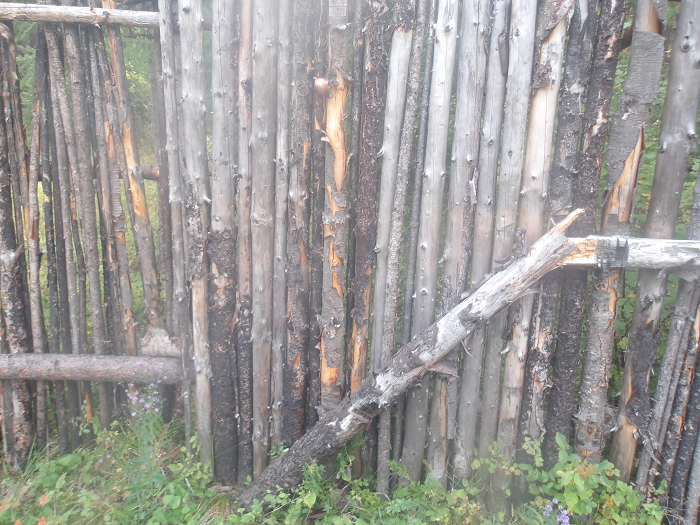
We first engineered this gate latch this past Autumn, I think during
WWOOFer Week almost a year ago. The handle broke off during the PTJ or some other part of the summer events, and needs to be redone. It'll be a fun woodworking
project.
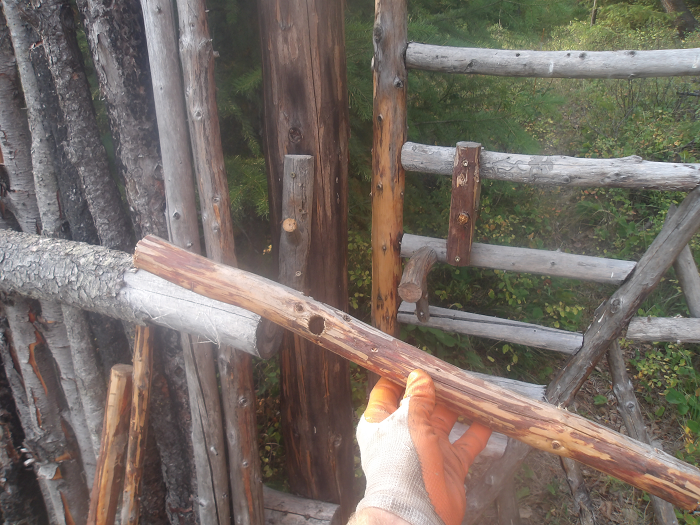
These two sections of fence are no longer connected to one another, and it's only a matter of time before one falls over. I think this will require an extensive rebuild as part of its repairs.
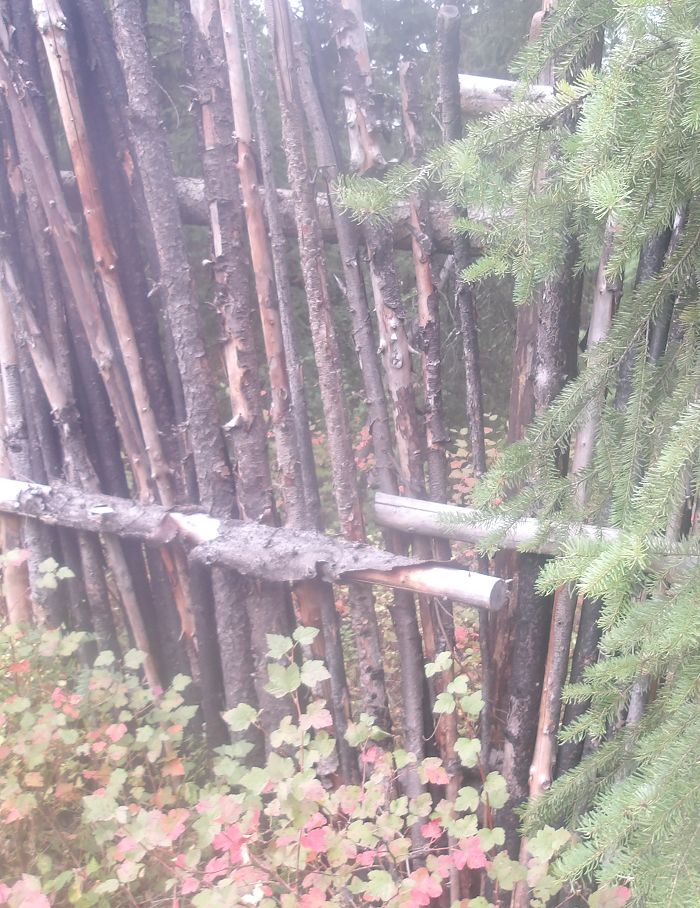
Meanwhile, back at
Basecamp in the afternoon, we looked into harvesting some of our
Sepp Holzer Grain. This is a long-cultivated rye grain that's attuned to colder, arid environments. We have a subset of this growing in a segregated area called the
Gulag: a fenced-in frame designed to keep out deer, turkeys, and seed-eating birds. Not really impressed with this year's crop, however I wanted to help the team learn how to harvest and process the grains. We opted to continue on and re-plant what was harvested.
We started by snipping off the suitable seed-heads from the grain. Not much this year, unfortunately. Not sure why it was so unimpressive either, since the grain planted in other areas (even at Basecamp) seemed to do much better than this batch.
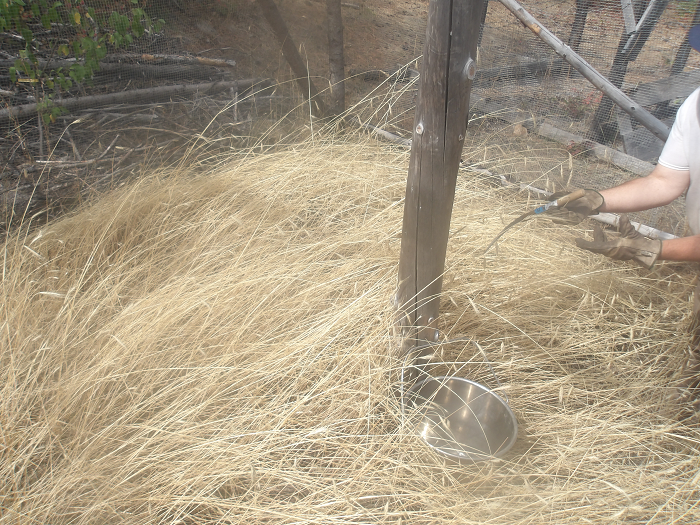
Once the seed heads were gathered, we cleared out all the stalks to expose the soil underneath, putting the stalks off to the side for use later.
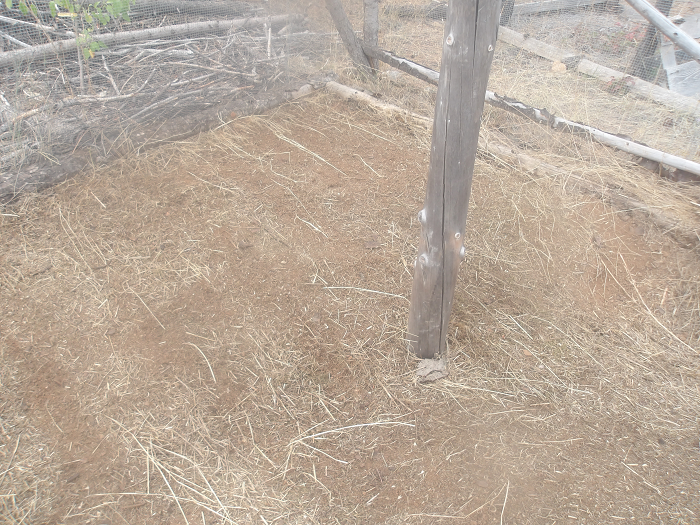
The seed heads were then threshed (where you knock the grain "berries" out of the hulls, or chaff), then winnowed (where you separate the berries from the chaff).
This step was completed when we broke up the soil surface just a little bit, using a "fokin" hoe. It has a narrower, hook-shaped head that helps break up compacted soil surfaces and kick out rocks. Then
Chris came in and sowed the seeds we'd collected and processed earlier.
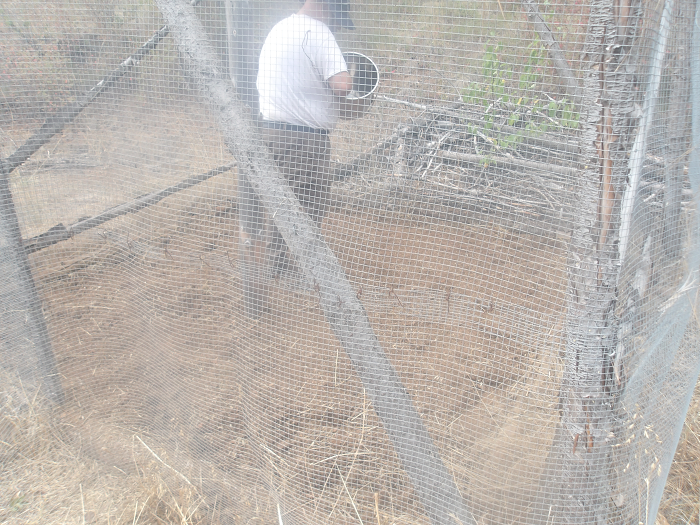
Finally, we covered the seeds with a light layer of mulch (the shredded up grain stalks).
Ben then watered the seeds, and we closed up the Gulag so no one would come inside and snack on them.
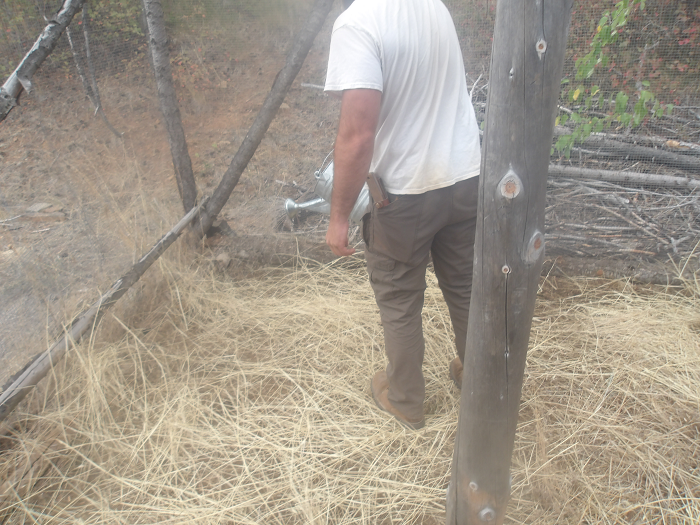
The grains will sprout and lay out a nice green mat of grass, very likely before our first snow.
That's all for now. Thanks for reading, and enjoy your day...!












